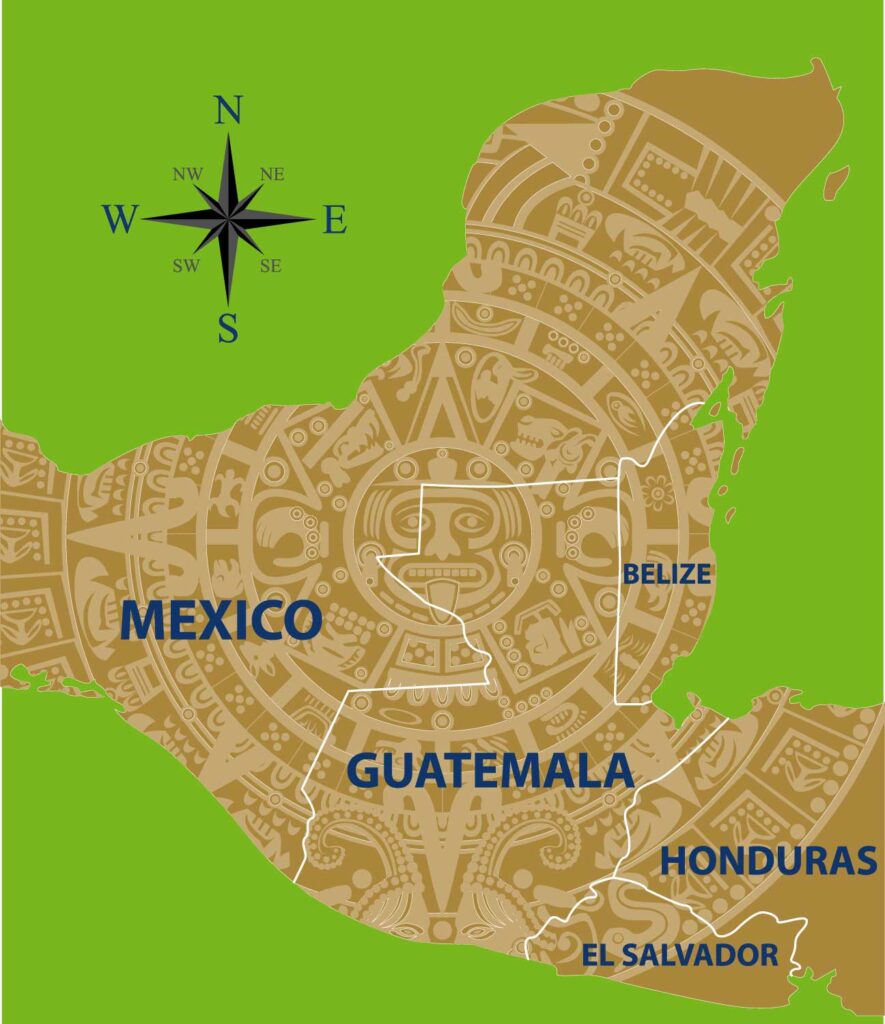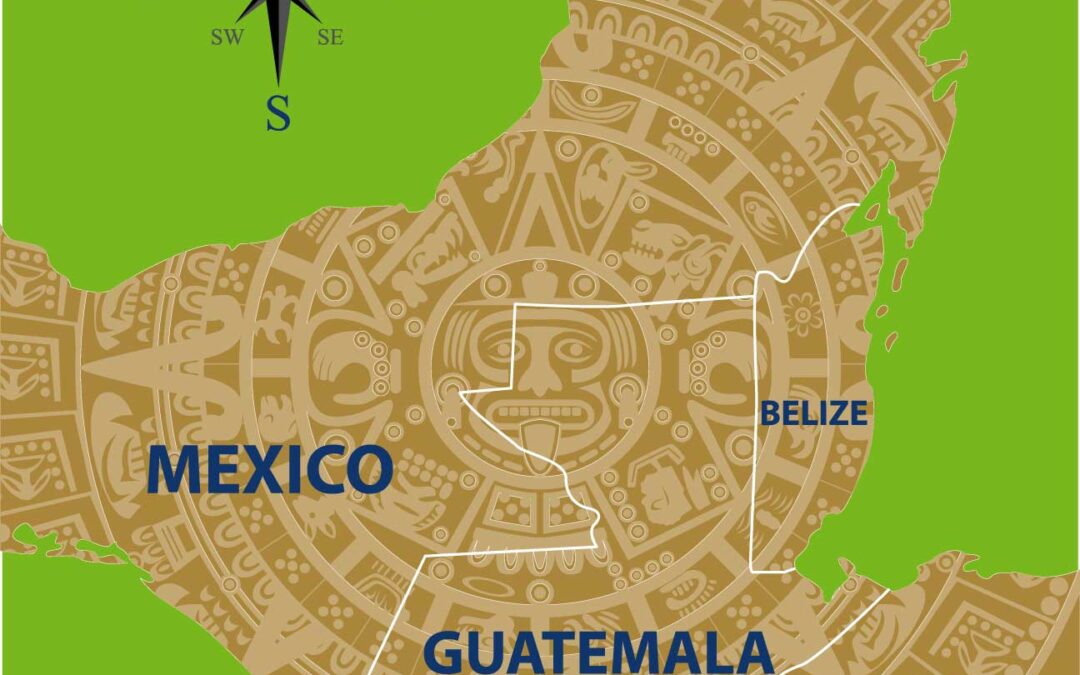
Where the events in the Book of Mormon actually took place remains a controversial matter among some members of the Church of Jesus Christ of Latter-day Saints. Fortunately, several well-equipped researchers and scholars have produced new evidence and insights that are leading the way to a more definitive geographical understanding. It is easier to determine whether various interpretations are incorrect than it is to determine more exact answers. One reason is that many clues are omitted by proponents of geographical theories.
Where
It is the author’s firm belief that the clues presented below, show that there is only one place on this planet earth where all the geographical and historical events described in the Book of Mormon actually took place, and that is in Mezzo-America. Specifically, in the area known today as Guatemala and southern Mexico. Dozens of other clues, in addition to those presented below, will be presented in subsequent articles which will bear that out—only one place fits them all!
Background
The prophet Mormon, writing about A.D. 380-385(?), included the records of Alma the younger in his historical compilation which is known today as the Book of Mormon. Included in that compilation are the Books of Mosiah and Alma. Mosiah 27:1-28:9 records the conversion of Alma the younger and the four sons of Mosiah: Ammon, Aaron, Omner and Himni.
Alma chapters 17-20 records the missionary experiences of Aaron; particularly the conversion of the Lamanite king Lamoni. King Lamoni had been granted kingship of the province of the land of Ishmael by his father (Alma 22:1).
Alma chapters 21-25 records the experiences of Aaron; particularly the conversion of the father of King Lamoni, who was the great king over all the Lamanites in the entire land of Nephi except for the land of Ishmael (Alma 22:1). Following his conversion, the great king issued a proclamation designed to protect the sons of Mosiah in their missionary efforts anywhere in the Land of Nephi (Alma 23:1-3).
Mormon’s Geography Description
At that point in Alma’s account, Mormon inserted his own description of the territory not only of the land of Nephi and the Lamanite peoples the Lamanite king governed, but also how that vast area was related to the lands inhabited by the Nephites:
27 And it came to pass that the king sent a proclamation throughout all the land, amongst all his people who were in all his land, who were in all the regions round about, which was bordering even to the sea, on the east and on the west, and which was divided from the land of Zarahemla by a narrow strip of wilderness, which ran from the sea east even to the sea west, and round about on the borders of the seashore, and the borders of the wilderness which was on the north by the land of Zarahemla, through the borders of Manti, by the head of the river Sidon, running from the east towards the west—and thus were the Lamanites and the Nephites divided.
28 Now, the more idle part of the Lamanites lived in the wilderness, and dwelt in tents; and they were spread through the wilderness on the west, in the land of Nephi; yea, and also on the west of the land of Zarahemla, in the borders by the seashore, and on the west in the land of Nephi, in the place of their fathers’ first inheritance, and thus bordering along by the seashore.
29 And also there were many Lamanites on the east by the seashore, whither the Nephites had driven them. And thus the Nephites were nearly surrounded by the Lamanites; nevertheless the Nephites had taken possession of all the northern parts of the land bordering on the wilderness, at the head of the river Sidon, from the east to the west, round about on the wilderness side; on the north, even until they came to the land which they called Bountiful.
30 And it bordered upon the land which they called Desolation, it being so far northward that it came into the land which had been peopled and been destroyed, of whose bones we have spoken, which was discovered by the people of Zarahemla, it being the place of their first landing.
31 And they came from there up into the south wilderness. Thus the land on the northward was called Desolation, and the land on the southward was called Bountiful, it being the wilderness which is filled with all manner of wild animals of every kind, a part of which had come from the land northward for food.
32 And now, it was only the distance of a day and a half’s journey for a Nephite, on the [border] line Bountiful and the land Desolation, from the east [border line] to the west sea; {not from the east sea to the west sea} and thus the land of Nephi and the land of Zarahemla were nearly surrounded by water, there being a small neck of land between the land northward and the land southward.
33 And it came to pass that the Nephites had inhabited the land Bountiful, even from the east unto the west sea, and thus the Nephites in their wisdom, with their guards and their armies, had hemmed in the Lamanites on the south, that thereby they should have no more possession on the north, that they might not overrun the land northward.
34 Therefore the Lamanites could have no more possessions only in the land of Nephi, and the wilderness round about. Now this was wisdom in the Nephites—as the Lamanites were an enemy to them, they would not suffer their afflictions on every hand, and also that they might have a country whither they might flee, according to their desires.
It is necessary to note that this geographic description, though inserted in Alma’s record of events that transpired between 90 and 77 B.C., makes references to some situations and locations which existed more than four centuries later.
An item-by-item explanation and analysis of this key passage will be made in subsequent articles.
Class Descriptions for Duane S. Crowther’s Fall 2022 In-person Classes
You’re invited to attend classes I’ll be teaching his fall through the Davis County Adult Education Classes program. They’ll be taught at Woods Cross High School in West Bountiful, Utah.
1. What NDEs Tell About Life Before and After Mortality
Many thousands of people, worldwide, have recorded experiences in which they’ve been shown views of pre-mortal and after-death happenings. The author of Life Everlasting: A Definitive Study of Life After Death will share valuable insights from them while describing life in the Spirit World.
6:00-7:15 p.m. Tuesdays, for six weeks. September 20—October 25.
2. How to Write Your Personal and Family Histories
This class will help and guide you to write them, step by step. Also, it will help you review those style, grammar, and punctuation rules you learned and half-forgot years ago. If you’re going to do any kind of writing, you’ll learn from and enjoy this class.
7:30-8:30 p.m. Tuesdays, for six weeks. September 20—October 25.
3. Old Testament Basics You Didn’t Learn from Come—Follow Me
The Bible’s Old Testament is filled with lessons that still shape the laws and activities of many nations today. This is a non-preaching survey of the structure, history, geography, and messages which cover the first two-thirds of this world’s known history. The instructor holds a master’s degree in Old and New Testaments from BYU.
6:00-7:15 p.m. Thursdays for six weeks. September 22—October 27.
4. Geographic and Historical Insights on the Lands of the Book of Mormon
Where are the lands in which the Book of Mormon took place? The Book of Mormon contains dozens of clues that answer the question. When all those clues are linked together and considered in depth, there’s only one place that fills all of them—Central America. This non-preaching class reviews Book of Mormon history as it discusses those clues.
7:30-8:30 Thursdays, for six weeks. September 22—October 27.
Click here to register. You must be pre-registered to attend any of the classes. The school district no longer permits tuition payments to be given to the class instructors—they must be processed through this computer registration system.
These will be insightful, carefully-prepared classes. You’ll enjoy them! Hope to see you there!

